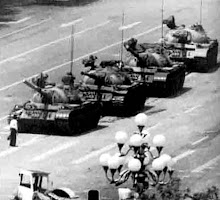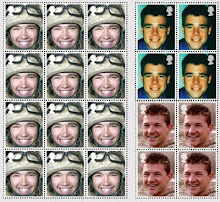 Sitting at my desk over the weekend, headlines about the Burma cyclone popped up regularly in the Top Stories box in the corner of my screen. First estimates were of around 400 fatalities. I knew this was, sadly, going to be way off the mark. I grew up in the Far East and storms of this magnitude always leave a devastating trail of death & destruction.
Sitting at my desk over the weekend, headlines about the Burma cyclone popped up regularly in the Top Stories box in the corner of my screen. First estimates were of around 400 fatalities. I knew this was, sadly, going to be way off the mark. I grew up in the Far East and storms of this magnitude always leave a devastating trail of death & destruction.With my foreign correspondent's hat on, I also wondered how the information was actually getting out of the notoriously xenophobic & isolationist regime. Slowly, the terrible scale of the disaster has leaked - and continues to leak out - not just via the authorities or the NGOs or accredited envoys, but via the Internet & mobile phones - technological advances unknown in Burma until relatively recently.
Without both the latter, it is unlikely that the world beyond the Burmese border would have learned so much so quickly about the scale and passion of the Buddhist Monks' protests in September 2007 (see image above).
At a debate hosted by London's Frontline Club on World Press Freedom Day (2nd May) last week, several speakers, including Nazenin Ansari of London-based Iranian newspaper Kayhan and Palestinian writer Iqbal Tamimi of the Exiled Journalists Network, eloquently lauded the new freedoms and frontiers afforded by the New Media. Regime change effected by text message and photo uploads? Stranger things have happened.
For a guide to the Burma/Myanmar debate, follow this BBC link:
http://news.bbc.co.uk/1/hi/magazine/7013943.stm
Without both the latter, it is unlikely that the world beyond the Burmese border would have learned so much so quickly about the scale and passion of the Buddhist Monks' protests in September 2007 (see image above).
At a debate hosted by London's Frontline Club on World Press Freedom Day (2nd May) last week, several speakers, including Nazenin Ansari of London-based Iranian newspaper Kayhan and Palestinian writer Iqbal Tamimi of the Exiled Journalists Network, eloquently lauded the new freedoms and frontiers afforded by the New Media. Regime change effected by text message and photo uploads? Stranger things have happened.
For a guide to the Burma/Myanmar debate, follow this BBC link:
http://news.bbc.co.uk/1/hi/magazine/7013943.stm




